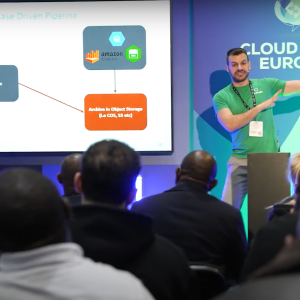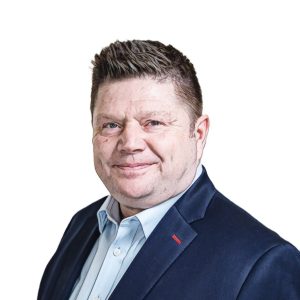
Would you run your entire business on the cloud including all the back office functions such as inventory, billings and accountancy?
Jeremy Roche, President and CEO, Financial Force, says "Look at the design of our app. It is all about extending Salesforce into the back office. It is about how can I run my whole business on Salesforce. That’s the basic premise. Run your whole business on the Salesforce1 platform." For Salesforce, think cloud.
Does ERP, even cloud ERP need an image makeover? Being a back office function ERP it doesn’t have the reputation for coolness or cutting edge technology or revenue generating returns.
But Roche looks unfazed by fashion when I ask how ERP will evolve on SAAS?
For a start, he says, ERP is a terribly misused term.
"We’re beyond ERP. We are at the next generation. Ten years ago you were looking at huge monolithic systems rolled out by the traditional vendors such as SAP and Oracle. Their objective was to get you to rip out everything that you then had to replace with their stuff. And that was the way we all grew up. The concept was you want to own the customer. It goes all the way back to mainframes and minis."
He says the opportunity to build Financial Force from scratch back in 2009 meant being able to do things differently.
"We didn’t want to build the same thing as everybody else. The pain was five years of rip and replace followed by the vendor saying hey it’s time for an upgrade. You get to do it again! And you’re in a perpetual spin of upgrade, finish. IT people were never given the chance to innovate. So Financial Force studied the market and looked at Salesforce. It looked at how they gained traction and growth."
The firm, though headquartered from San Francisco is run by Englishman Roche. The EMEA headquarters is run from Harrogate in Yorkshire.
The company was formed in 2009. First investors included Unit 4 and Salesforce Ventures. Advent International ($20bn in assets under management), Technology Crossover Ventures, Salesforce Ventures are also invested. (see investor timeline below)
Cloud move
The model executed by Financial Force was to emulate what Salesforce had done. Instead of trying to storm the back office at once it would choose its targets.
According to Roche, Salesforce started by going to the sales department and saying to the sales director ‘you hate your existing CRM software. Why not put Salesforce subscriptions on your credit cards and you’ll have something that actually supports your business."
For Financial Force it wasn’t that straightforward.
As Roche puts it no one was easily going to convince a CFO that putting Accounts Receivable and Billing on a cloud software subscription paid for by credit card would be a good idea.
"We wanted to recreate the same sort of ease of buying in [that Salesforce offered the sales directors] but for the business apps rather than the selling apps."
The approach is to find the business pain and what applications customers are receptive to moving into the cloud and what the motive or catalyst is, he says.
With many industries such as media being transformed by digital publishing the old billing systems don’t work anymore, he says. Advertisers are no longer buying space but clicks, eyeballs and presence. The same is true for retailers who move from physical stores to selling online.
But cloud ERP is not just for new businesses or those under the strain of immense change.
Roche offers the example of one customer in oil and gas. In oil and gas there are inspectors, not consultants. They are inspectors of pipelines and refineries. So in order to serve that market in a vertical manner Financial Force changed the way the batch of screens appears. So instead of clicking consultants, the customers click inspectors and that functionality is different then throughout the product for that user.
Roche says Financial Force can add vertical functionality and that ‘over time we will partition further down into verticals. But at the moment we’re horizontal.’
Financial Force, he says, grows inside companies when customers see the benefit and extend it out.
"That’s why we’re cautious with the term ERP. We have a suite, we call it ERP at customer speed. We’re building on a platform that was designed for customer facing apps so we will make business apps that look customer facing as well."
"Ten years ago it was very transactional. Now we’re all about the relationship, And that relationship can start or be affected by what happens in the back office. That can be an accountant or the billing department. The goal is to make the customer reliant on the platform and build a relationship so that the customer keeps doing the same thing."
The old legacy systems do not support these new relationships.
US$110m
Financial Force first attracted investment form Salesforce Ventures and Unit 4, [aka Dutch Public] which owned its predecessor company Coda. Next in was Advent international, now the owners of Unit 4.
Next in for the next funding round was Silicon Valley based Technology Crossover Ventures (TCV) and Salesforce Ventures again.
"We raised cash from Advent to raise R+D, then advance sales, marketing and support, Now with $110m, we are going to advance the entire business to the next level. We got to 600 people. We are now in North America, London, Harrogate, Spain and Sydney Australia."
Revenue is highest in North America, then UK, then Europe, which is served primarily from the UK.
"You don’t gain market traction until you have a presence and we don’t want to go too thin. The UK market is just now turning to cloud so as our second market we want to stay focused on that."
Investment and events timeline
March 2015: $110m from Technology Crossover Ventures and Salesforce Ventures
March 2015 says investment is off the back of 90% subscription growth and 2014 $50m revenue run rate
April 2014: $50m from Advent International
Formed in 2009 from Coda2go a Salesforce1 based accountancy application supplier. Accountancy software provider Coda is owned by Unit 4 Agresso.
May 2015: Reaches over 500 staff.






